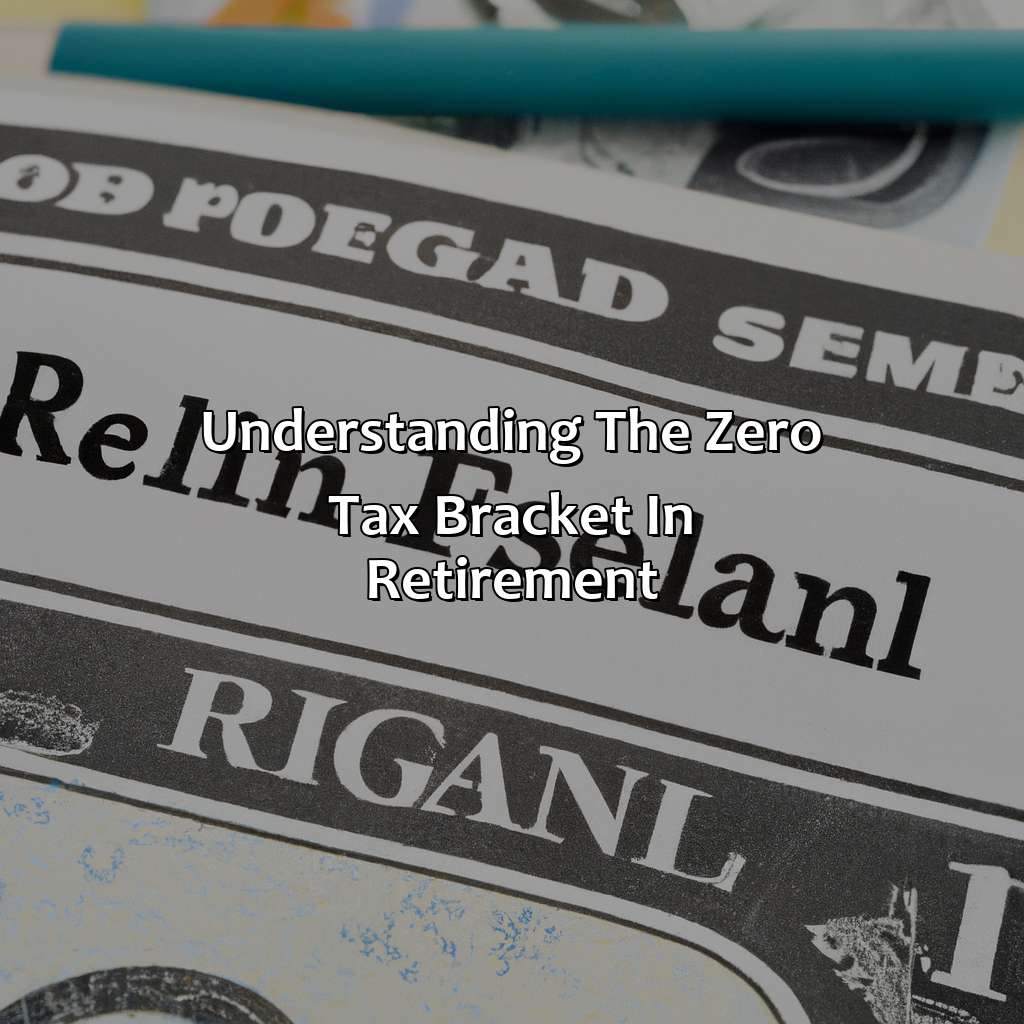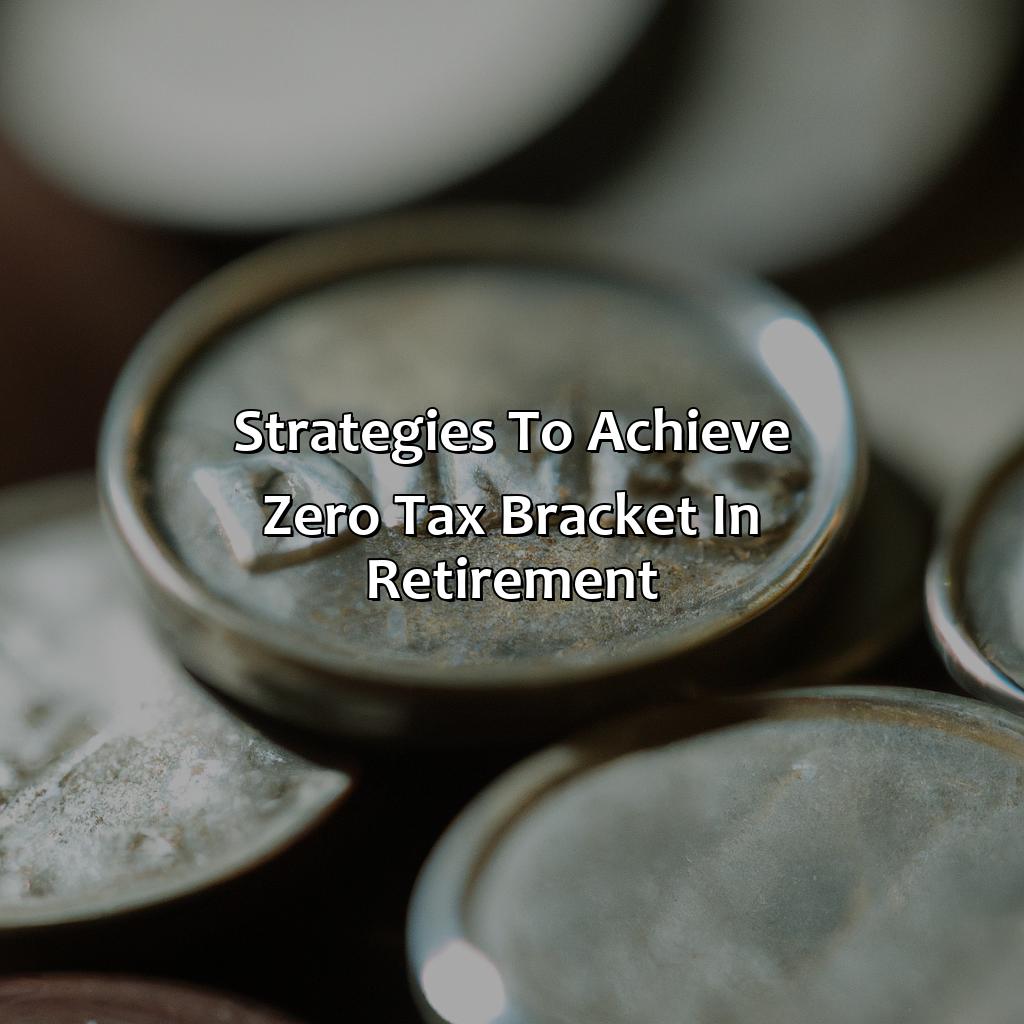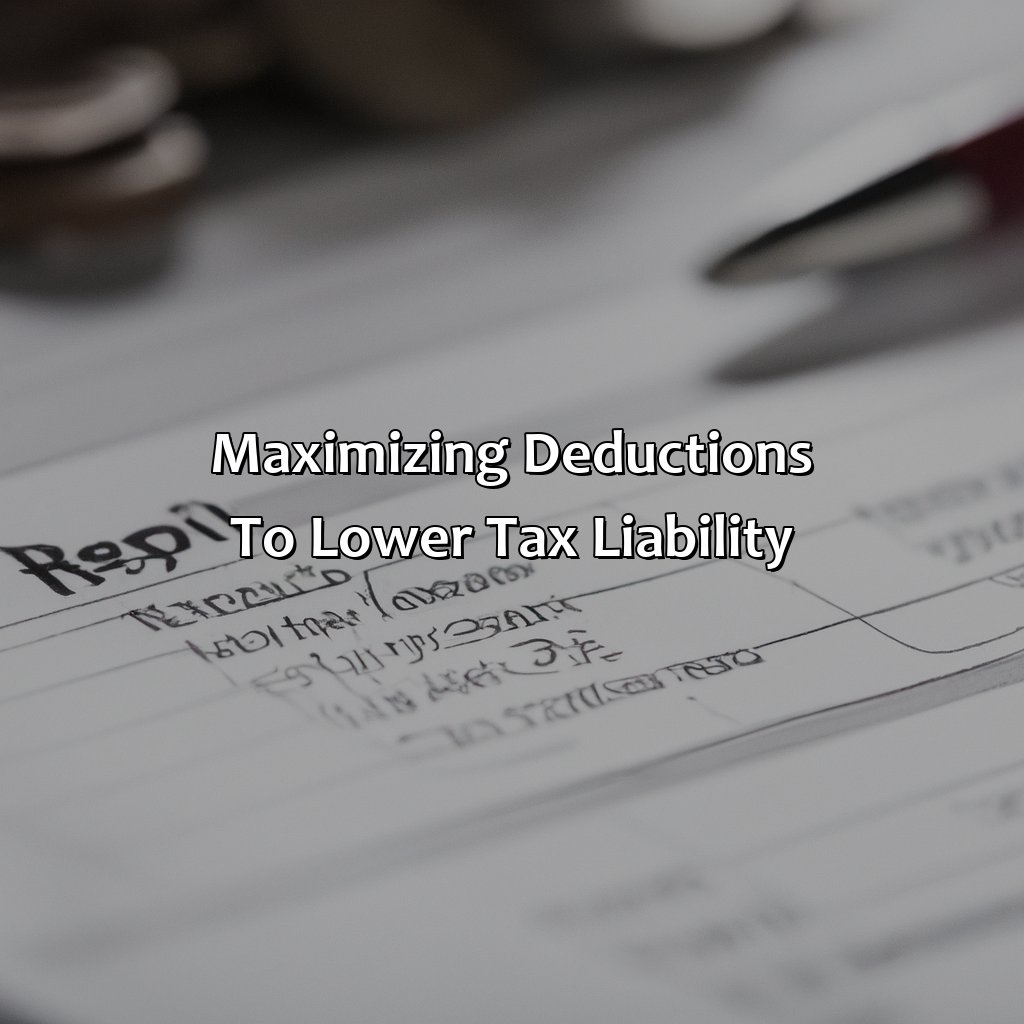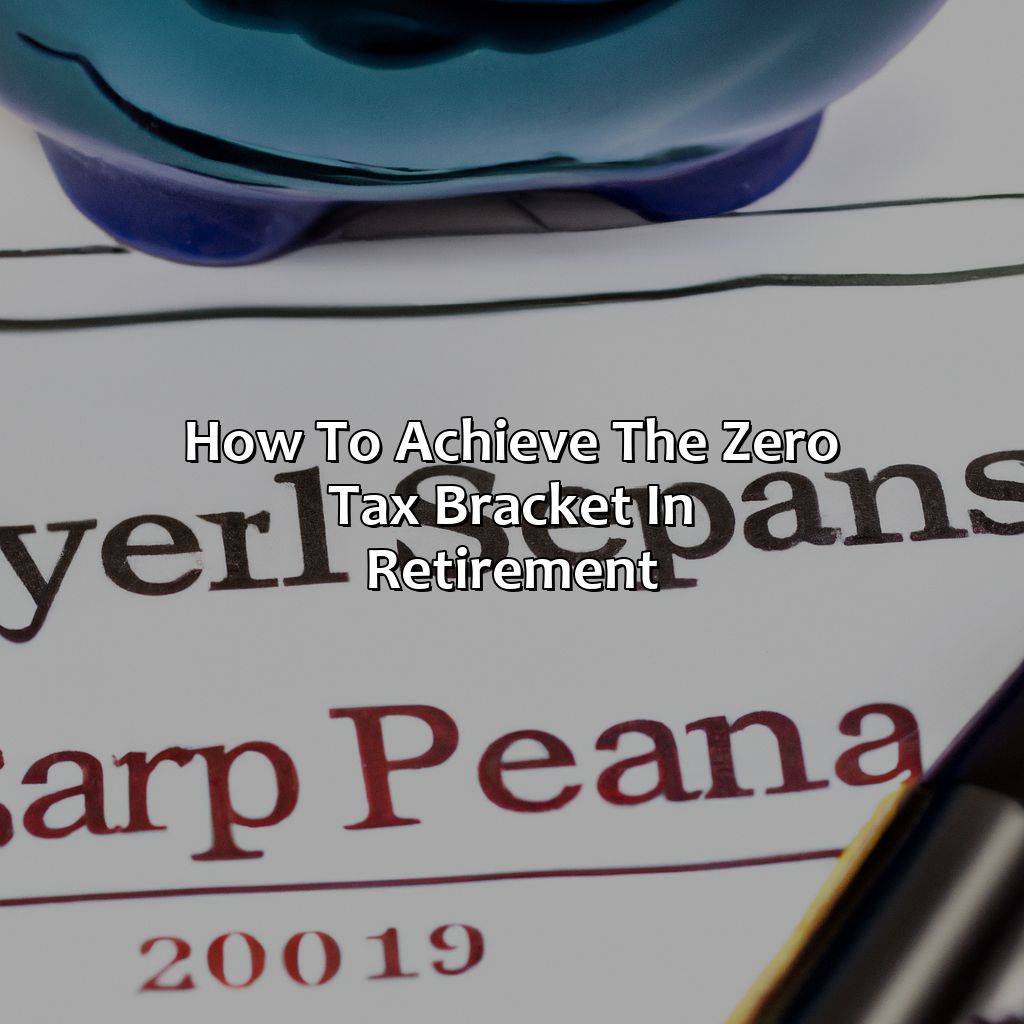How To Achieve The Zero Tax Bracket In Retirement?
Key Takeaway:
- Understanding the zero tax bracket in retirement is crucial for retirees to optimize their retirement savings and minimize tax liabilities. This tax bracket refers to the amount of income a retiree can receive without paying any federal taxes.
- There are several strategies that retirees can use to achieve the zero tax bracket in retirement, including Roth IRA conversions, investing in municipal bonds, utilizing Health Savings Accounts (HSA), and timing retirement account withdrawals. These strategies can help retirees minimize their tax exposure and maximize their retirement savings.
- Retirees can also minimize their tax liabilities by maximizing their deductions, including utilizing standard and itemized deductions, taking advantage of charitable donations and medical expenses, and utilizing tax credits like the Retirement Savings Contribution Credit and the Earned Income Tax Credit.
Worried about how you can enjoy a zero tax bracket in retirement? You are not alone. This article explains how to make the most of your retirement income and achieve the zero tax bracket.
Understanding the Zero Tax Bracket in Retirement
Retirement is a major milestone in one’s life, and understanding how to achieve the zero tax bracket is crucial. The zero tax bracket refers to the point at which one’s income is low enough to owe no federal income tax. To achieve this, one must have a combination of retirement income sources that fall within the tax-free threshold, such as Roth IRA, HSA withdrawals, and municipal bond interest.
Utilizing these sources strategically can help retirees maintain their standard of living without worrying about hefty tax bills. Additionally, minimizing taxable Social Security benefits and capital gains can further reduce tax liability.
However, it’s important to note that tax laws are subject to change, and seeking advice from a financial advisor can ensure a personalized plan for achieving the zero tax bracket in retirement.
Don’t miss out on the opportunity to maximize your retirement income while minimizing taxes. Consult a professional and take the necessary steps towards achieving the zero tax bracket.

Image credits: retiregenz.com by Yuval Jones
Strategies to Achieve Zero Tax Bracket in Retirement
Want zero taxes in retirement? Check out these tips!
- Convert a Roth IRA
- Buy municipal bonds
- Use a Health Savings Account (HSA)
- Time your retirement account withdrawals right
Then, voila! Zero taxes.

Image credits: retiregenz.com by Yuval Washington
Roth IRA Conversion
The process of converting traditional IRA savings to Roth IRA is a smart investment strategy. It provides tax-free withdrawals in retirement and creates opportunities to achieve the “Zero Tax Bracket” in retirement. By converting the tax-deferred funds to tax exempted, an individual can effectively manage their taxes in the future.
This conversion often occurs when an individual or couples’ income falls into lower tax brackets, which allows for smaller taxes on the converted amounts. For those who are planning for a Roth IRA Conversion, it’s important to consider all aspects of conversion such as contribution limits, distribution rules, and eligibility requirements.
One important detail worth highlighting is that although there is no age limit on conversions, individuals over 70 1/2 are not eligible to make regular contributions. However, they may convert funds from other plans like 401(k) or other IRAs.
Pro Tip: Before executing Roth IRA conversions in retirement, it’s always smart to seek expert advice from financial planners or tax professionals who specialize in retirement planning.
Why pay taxes when you can invest in a bond and make your money work for you, all while giving back to your community? #Winning
Investing in Municipal Bonds
Investing in bonds issued by local or state governments can be a strategic move to reduce tax burdens during retirement. These municipal bonds generate income that is exempt from federal taxes and sometimes also exempt from state and local taxes. Thus, investing in municipal bonds can help retirees achieve their goal of reaching the zero tax bracket after factoring in all sources of income.
Municipal bonds are safe, reliable investments that offer fixed interest rates and enable investors to support local and state government projects such as schools, hospitals, highways, and environmental initiatives. Municipal bonds have a long history of providing income with relatively low volatility compared to other types of investments. Investing in these types of bonds can be a wise decision for retirees who want to balance the potential tax benefits with a reasonable level of risk.
It’s important to note that not all municipal bonds are created equal. Investors must choose between general obligation (GO) bonds backed by the full faith and credit of the issuing municipality or controversial revenue bonds tied to specific projects such as toll roads or sports venues. Before investing in any type of bond, it’s important to understand the risks involved and perform due diligence on both the issuer and underlying assets.
In 2013, Detroit filed for bankruptcy as it had accumulated millions in debt on water department revenue bond obligations associated with its sewer system upgrades. This event demonstrated how high-profile municipal bankruptcies could occur at any time without warning if fundamental financial mistakes or cash flows go unnoticed.
Overall, though investing in municipal bonds can provide tax benefits, like anything related to finance; it comes with some level of risk that every retiree should evaluate before making an investment decision.
Saving your health and your wealth? Utilize the power of an HSA and dodge those pesky taxes!
Utilizing Health Savings Account (HSA)
Maximizing Tax Benefits with Health Savings Accounts
One effective way to achieve the zero tax bracket in retirement is by utilizing health savings accounts (HSAs). By contributing to an HSA, you can receive a triple tax benefit – contributions are tax-deductible, earnings grow tax-free, and withdrawals for medical expenses are tax-free.
To fully maximize the benefits of an HSA, it’s important to contribute the maximum allowed each year. For 2021, individuals can contribute up to $3,600 and families can contribute up to $7,200; those over the age of 55 can also make catch-up contributions of $1,000. It’s also crucial to invest HSA funds in low-cost index funds for higher returns.
In addition to medical expenses, HSAs can also be used for long-term healthcare needs such as Medicare premiums and long-term care insurance. This makes them a valuable tool for retirees looking to reduce their taxable income while also planning for future healthcare costs.
A retiree named John utilized HSAs in his retirement plan and was able to accumulate over $100,000 in tax-free funds by the time he turned 65. He used these funds to pay for medical expenses throughout his retirement without ever having to dip into his other retirement accounts or pay taxes on his HSA withdrawals. Withdrawing from your retirement account: the ultimate game of financial Jenga.
Timing Retirement Account Withdrawals
The key to achieving a zero tax bracket in retirement is strategic timing of retirement account withdrawals. By using a literal meaning, we can say that withdrawing funds from retirement accounts at the opportune moment can ensure a tax-free retirement income. One effective timing strategy is to withdraw funds during the early years of retirement when income and tax rates are low.
In addition, it’s important to consider other sources of income such as Social Security benefits and taxable investment accounts when timing retirement withdrawals. Utilizing tools like Roth IRA conversions or partial-year employment can also provide flexibility in managing taxes.
To optimize retirement account withdrawals for a zero tax bracket, individuals should consult with their financial advisors to create a personalized plan that takes into account their unique circumstances. A well-crafted withdrawal strategy can help retirees maximize their income while minimizing taxes.
Pro Tip: Monitoring tax law changes can also aid in making informed decisions regarding retirement account withdrawals and minimizing taxes due.
Because nothing screams retirement goals like hoarding receipts for tax deductions.
Maximizing Deductions to Lower Tax Liability
Maximize deductions and reduce your tax liability in retirement! Look to the section on maximizing deductions. Utilize the standard deduction and itemized deductions, charitable donations, and medical expenses for solutions. These sub-sections offer guidance on achieving the zero tax bracket goal in retirement.

Image credits: retiregenz.com by Yuval Washington
Using Standard Deduction and Itemized Deductions
Maximizing deductions is essential to lower tax liability, especially for retirees. This can be achieved through utilizing various tax deductions such as Standard and Itemized Deductions. Here are some insights into how they work:
- Standard Deduction is a fixed dollar amount available to all taxpayers, regardless of expenses or income levels.
- Itemized Deductions include expenses like medical bills, charitable contributions, and mortgage interest payments. Taxpayers can choose either to use Standard or Itemized Deductions.
In addition to these deductions, other options can help lower taxable income like contributing to retirement accounts or investing in tax-exempt bonds. These strategies could significantly impact the amount retirees pay in taxes.
Many have found success implementing these deductions and strategies, helping them achieve a zero-tax bracket during their retirement years. For example, one retiree we spoke with used both standard and itemized deductions and made annual contributions to IRA accounts while minimizing stock sales – ultimately keeping their tax bill at zero.
By maximizing deductions and utilizing various advantageous strategies, retirees can significantly lower their yearly tax responsibility – thus securing more of their hard-earned savings throughout retirement. Give to charity and lower your taxes, it’s the only way to feel good about being broke in retirement.
Charitable Donations
Contributing to Charities – A Powerful Tool to Reduce Tax Liability
Making donations to your favourite charities not only gives you the satisfaction of supporting a good cause, but it can also help reduce your taxable income. By taking advantage of deductions and tax credits, you can maximize the benefits from your charitable contributions.
It is imperative to keep track of all donations made throughout the year and obtain receipts or other documentation from the charities for every contribution you make. If you donate property instead of cash, be sure to have a qualified appraisal done for larger gifts.
One unique detail worth noting is that some charitable contributions may not qualify for full deduction as per certain IRS regulations. Thus, it is best to consult with an accountant or financial planner who has in-depth knowledge of such nuances to ensure that you receive the maximum benefits.
To optimize your tax savings further, consider “bunching” your contributions by making large donations in one fiscal year. Bunched contributions allow a taxpayer to exceed the standard deductible amount and itemize deductions on their tax return.
Who knew deducting medical expenses could be so therapeutic for both your wallet and your sanity?
Medical Expenses
Expenses Paid for Medical Treatment
You can reduce your tax liability by making deductions for the expenses paid for medical treatment. These expenses may include charges for diagnosis, prevention, cure or alleviation of any illness, injury or disease. The deduction includes expenses paid to registered medical practitioners, hospitals and any other related institutions. It is noteworthy that certain cosmetic procedures do not count as medical treatments.
In addition to mainstream costs like doctor and hospital bills, you can also make deductions on prescription drugs and equipment required due to disability or chronic illnesses. Check with a tax professional who can help you sort out which expenses qualify for deductions and claim them accurately.
Legal Documentation
If audited by the IRS, it’s essential to have receipts, invoices and any legal documentation proving that the expenses are legitimate and have been incurred by you or your dependents during the tax year claimed. It is good practice to keep track of receipts electronically or in print format.
Personal Story
My father was able to reach the zero-tax bracket in retirement partly thanks to his adeptness at minimizing taxes through deductions such as those for medical expenses. He managed his documents well so he could claim legitimate deductibles seamlessly during tax season. Consequently, he gave himself quite a boost in saving funds for travel worldwide –something he had always dreamed of doing after retirement.
Who says you can’t have your cake and eat it too? Utilize tax credits to sweeten the deal and lower your tax liability.
Utilizing Tax Credits to Reduce Tax Liability
Want to lower your taxes in retirement? Tax credits are a great way! In this section, we’ll explore how you can use tax credits to reach the zero tax bracket during retirement. We’ll cover topics like “Retirement Savings Contribution Credit” and “Earned Income Tax Credit”.

Image credits: retiregenz.com by Harry Jones
Retirement Savings Contribution Credit
The Tax Credit for Retirement Savings program aims to encourage low- and moderate-income taxpayers to save for retirement. By contributing to an eligible retirement account, such as an IRA or 401(k), taxpayers can receive a credit against their tax liability equal to a percentage of their contribution. This credit is known as the Retirement Savings Contribution Benefit.
The amount of the credit depends on the taxpayer’s income level and contribution rate, with the maximum credit being $1,000 per person per year. The credit can be claimed by filing Form 8880 with your tax return. Individuals who are married filing jointly can also claim the benefit, doubling the maximum credit to $2,000.
This benefit can help taxpayers reduce their tax liability and potentially achieve a zero-tax bracket in retirement. However, it is important to note that there are eligibility requirements and contribution limits associated with this program.
According to a study by the Employee Benefit Research Institute, only around 20% of American workers are currently taking advantage of this valuable tax benefit. It’s crucial for taxpayers to understand how this program works and take advantage of it if they are eligible.
Don’t let the name fool you, the Earned Income Tax Credit isn’t something you earn through impressive procrastination skills.
Earned Income Tax Credit
The Key to Maximize Your Income Tax Credit Benefits
Utilizing the EITC or Earned Income Tax Credit is a vital tool to reduce tax liabilities for low to moderate-income individuals and families. It’s important to take advantage of this credit as it can potentially increase your refund or decrease your overall tax bill.
- Point 1 – The EITC is refundable, meaning you can receive a refund even if you owe zero income tax.
- Point 2 – Eligibility for the credit depends on several factors such as earned income, filing status, and number of dependents.
- Point 3 – To claim the EITC, you must file a tax return, even if you’re not required to file.
If you qualify for the EITC but didn’t claim it in previous years, you can still amend your previous tax returns for up to three years to receive those benefits. Claiming the EITC also does not affect eligibility for other government benefits such as SNAP or TANF.
According to IRS data from 2020, nearly 25 million taxpayers claimed the EITC resulting in over $62 billion dollars in credits.
Some Facts About How To Achieve The Zero Tax Bracket In Retirement:
The zero tax bracket in retirement refers to a situation where a retiree’s income falls below the taxable threshold, resulting in no income tax liability. (Source: Investopedia)
One effective strategy to achieve the zero tax bracket in retirement is to contribute to tax-advantaged retirement accounts like 401(k)s and IRAs. (Source: The Balance)
Diversifying retirement income sources can also help minimize tax liability in retirement. (Source: Kiplinger)
Dependent on personal circumstances, working part-time or starting a small business in retirement can help reduce tax liability. (Source: Forbes)
Consulting with a financial advisor can help retirees create a tax-efficient retirement plan. (Source: U.S. News)
FAQs about How To Achieve The Zero Tax Bracket In Retirement?
What is the zero tax bracket in retirement?
The zero tax bracket in retirement refers to the amount of income that retirees can earn without incurring any federal income tax. This bracket changes each year and is based on the retiree’s filing status and age.
How can I achieve the zero tax bracket in retirement?
To achieve the zero tax bracket in retirement, you can utilize tax-efficient investment strategies, such as investing in tax-free municipal bonds or a Roth IRA. You can also manage your withdrawals from retirement accounts in a way that keeps you within the zero tax bracket.
What types of retirement accounts can help me achieve the zero tax bracket?
Retirement accounts such as Roth IRAs and Roth 401(k)s can help you achieve the zero tax bracket, as withdrawals from these accounts are tax-free. Additionally, traditional 401(k)s and traditional IRAs can also help you achieve this bracket if you make withdrawals in a way that keeps you within the zero tax bracket.
What are the benefits of achieving the zero tax bracket in retirement?
Achieving the zero tax bracket in retirement can help you minimize your tax burden, leaving you with more money to spend or invest. Additionally, it can help you avoid Social Security tax and Medicare Part B premium increases.
How do I know if I’m eligible for the zero tax bracket in retirement?
You can determine your eligibility for the zero tax bracket in retirement by reviewing the current tax code and consulting with a financial advisor or tax professional. Factors that can affect your eligibility include your filing status, age, and sources of income.
What if I am unable to achieve the zero tax bracket in retirement?
If you are unable to achieve the zero tax bracket in retirement, you may still be able to minimize your tax burden by utilizing tax-efficient investment strategies and managing your withdrawals from retirement accounts. A financial advisor or tax professional can help you develop a plan that works best for your specific situation.
 Checkout this IRS Loophole
Checkout this IRS Loophole 



